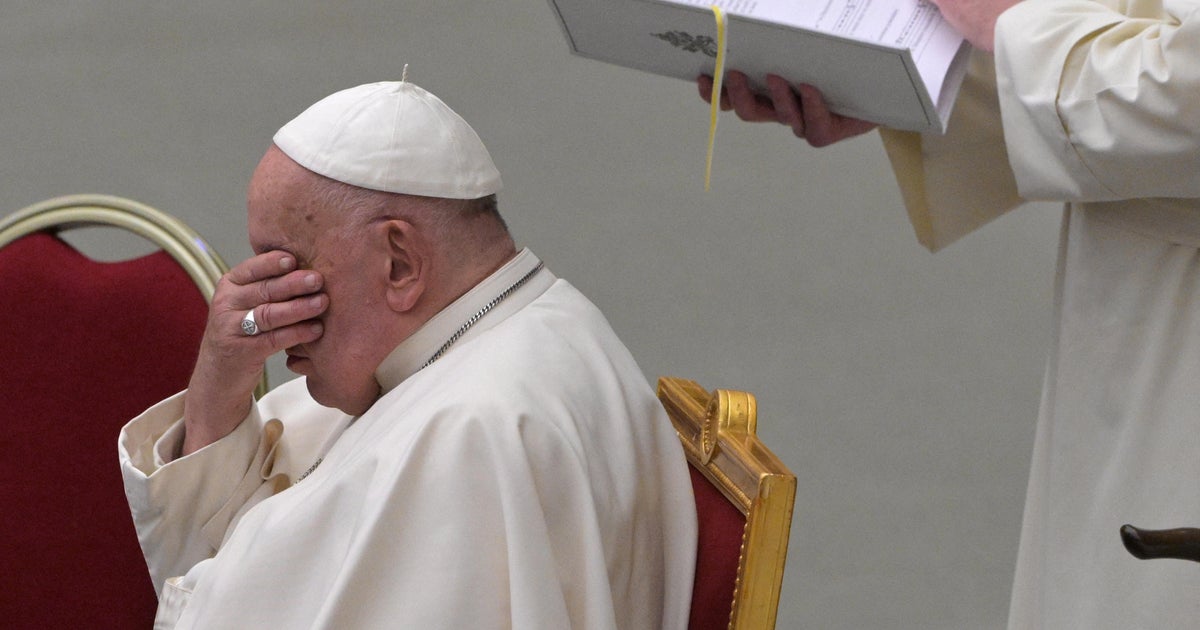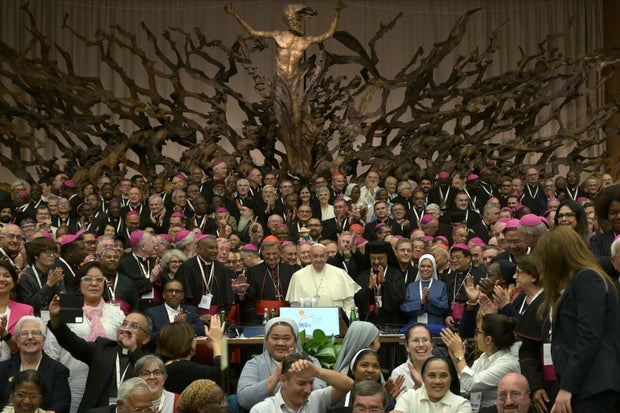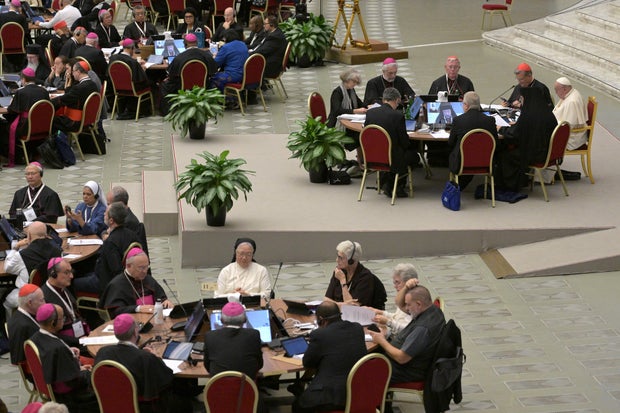CBS News
Stanley is having a rare sale for summer: Save up to 25% on water bottles and more

Stanley
We all know Stanley for its Quencher tumbler, an insulated cup so famous that earlier this year, fans camped out in front of Target stores to get their hands on limited edition versions of the water bottle. Those who only know the Quencher obsession may not realize that Stanley has been selling other products since 1913. These include other insulated water bottles, mugs, containers for food and even coffee makers for those on the go.
Right now, Stanley is having a rare sale on the products above, and more, for summer. The brand is offering savings of 25% off a wide range of products. The discount can be claimed when you enter the code “HELLOSUMMER” at checkout.
If you’re a Stanley fan, are planning on camping this summer, or are in any need of insulated storage for food or drinks, we highly recommend taking advantage of this discount, which lasts until June 17. Tap the button below to head directly to the sale, or read on for our top Stanley Summer Sale picks. Considering Stanley’s immense popularity, we’re surprised the brand is having a sale at all, and we’re not sure when the next one will come around.
Stanley The Iceflow flip straw water bottle, 22 oz.
If you’re looking for a classic reusable water bottle, Stanley’s Iceflow flip straw is your best bet. Unlike the famous Quencher cup, this Ice Flow series water bottle has a built-in flip straw that, when not in use, locks in place to prevent leakage.
Like the famous Quencher cup though, this water bottle is made of durable stainless steel and other BPA-free materials, has double-walled vacuum insulation and is dishwasher safe. It can keep cold drinks cool for up to 16 hours (that’s five hours longer than the Quencher) and keeps ice for two days.
The Stanley The Iceflow flip straw water bottle has a 4.8-star rating on Stanley’s site. One reviewer wrote, “Great for my son to use daily! We haven’t had any leaks. At the end of a hot school day there is still ice in the bottle!”
Stanley Classic Legendary bottle, 48 oz.
Stanley
The brand’s Classic Legendary bottle is reminiscent of the older days of the Stanley, days when the brand was known for its outdoorsy drinkware, rather than its everyday Quencher cups. The brand still makes insulated bottles, mugs and more for adventure travelers, so if you’ve got a camping trip planned this summer, we recommend you take the Classic Legendary bottle with you.
The insulation on the Stanley Classic Legendary bottle is impressive, as it’s able to keep drinks warm for 38 hours, cold drinks cool for up to 35 hours and ice for a whopping six days. Plus, the lid doubles as a cup, making it easier (and safer) to drink your morning brew. We also appreciate the color selection, which is broader than it used to be. Customers can pick from purple, pink, neon blue and multicolored patterns if that’s their style.
Stanley Stay-Hot camp mug, 24 oz.
Stanley
Drink your to-go coffee with ease with the Stanley Stay-Hot camp mug. The mug is quite large, able to hold up to 24 ounces (the average cup of coffee is eight ounces) and the brand promises that it can keep that beverage hot for up to two and a half hours. And if you’re into iced coffee, the insulation is even better, as it can hold ice for up to 25 hours and keep cold drinks cool for six hours.
The reason the insulation isn’t as robust as other Stanley products is due to the Drink-Thru lid, which, with the sip opening, cannot be completely closed. There are a few colors currently available, but the only color option on sale is the Hammertone green.
The Stanley Stay-Hot camp mug has a 4.1-star rating on the brand’s site. One reviewer wrote, “Just the right size for two cups of coffee! Perfect for workdays or soccer sidelines. I love this product!”
Stanley The Quick Flip Go bottle, 24 oz.
Stanley
Despite being strawless, The Quickly Flip Go is one of the brand’s most popular products. The lid that covers the mouthpiece can be opened with a push button, allowing for quick and easy access to your ice-cold beverage. And speaking of ice, this bottle can keep ice for 40 hours.
It also keeps cold drinks cool for 12 hours and hot drinks warm for eight hours. The Flip Go cap also makes this bottle leakproof, while the stainless steel, double-walled insulation is safe to put in the dishwasher. The only colors that are on sale are the black 2.0, the rose quartz and the polar.
The Quick Flip Go bottle has a 4.5-star rating on Stanley. One reviewer wrote, “Love this bottle. Love the flip cap. I am not a straw person, so I love the deep drinking spout that seals closed and doesn’t leak. I can toss it on my front seat until I get organized. Fits perfectly in the car cup holder. Light enough to grab and go anywhere.”
Stanley Adventure All-In-One Boil + Brew French press, 32 oz.
Stanley
Just because you’re camping doesn’t mean you have to skip out on making your preferred cup of brew. The Stanley Adventure comes with a French press insert, so all you have to do is bring your favorite ground beans with you and voila, you can have your home coffee on the road.
This product also functions as a small pot that you can reheat liquids in, such as hot water for tea or soup. It can hold 32 ounces and can be put in the dishwasher for cleaning.
The Stanley Adventure All-In-One Boil + Brew French press has a 4.9-star rating on Stanley. One reviewer wrote, “This thing is worth its weight in gold! We take it everywhere and save so much money on brewing our own coffee. It lives in our car and is used well beyond the intended purpose of camping.”
Stanley Artisan thermal food jar, 27 oz.
Stanley
You all know Stanley doesn’t just make drinkware right? The company has products designed to keep food hot and cold as well, including this Stanley Artisan thermal food jar. Offering 27 ounces of space, the thermal food jar can easily fit an entree, such as soups, pasta, rice dishes and more.
It keeps cold foods cool for up to 23 hours and hot foods warm for up to 20 hours. This can be attributed to the food jar’s four layers of vacuum thermal protection as well as the cork stopper, which is covered by a steel cap that doubles as a little bowl.
You can get this in two colors – black or Hammertone green.
CBS News
Navy issues apology for destroying Alaska Native village in 1882

Shells fell on the Alaska Native village as winter approached, and then sailors landed and burned what was left of homes, food caches and canoes. Conditions grew so dire in the following months that elders sacrificed their own lives to spare food for surviving children.
It was Oct. 26, 1882, in Angoon, a Tlingit village of about 420 people in the southeastern Alaska panhandle. Now, 142 years later, the perpetrator of the bombardment — the U.S. Navy —has apologized.
Rear Adm. Mark Sucato, the commander of the Navy’s northwest region, issued the apology during an at-times emotional ceremony Saturday, the anniversary of the atrocity.
“The Navy recognizes the pain and suffering inflicted upon the Tlingit people, and we acknowledge these wrongful actions resulted in the loss of life, the loss of resources, the loss of culture, and created and inflicted intergenerational trauma on these clans,” he said during the ceremony, which was livestreamed from Angoon. “The Navy takes the significance of this action very, very seriously and knows an apology is long overdue.”
While the rebuilt Angoon received $90,000 in a settlement with the Department of Interior in 1973, village leaders have for decades sought an apology as well, beginning each yearly remembrance by asking three times, “Is there anyone here from the Navy to apologize?”
“You can imagine the generations of people that have died since 1882 that have wondered what had happened, why it happened, and wanted an apology of some sort, because in our minds, we didn’t do anything wrong,” said Daniel Johnson Jr., a tribal head in Angoon.
The attack was one of a series of conflicts between the American military and Alaska Natives in the years after the U.S. bought the territory from Russia in 1867. The U.S. Navy issued an apology last month for destroying the nearby village of Kake in 1869, and the Army has indicated that it plans to apologize for shelling Wrangell, also in southeast Alaska, that year, though no date has been set.
Chief Mass Communication Spc. Gretchen Albrecht/U.S. Navy via AP
The Navy acknowledges the actions it undertook or ordered in Angoon and Kake caused deaths, a loss of resources and multigenerational trauma, Navy civilian spokesperson Julianne Leinenveber said in an email prior to the event.
“An apology is not only warranted, but long overdue,” she said.
Today, Angoon remains a quaint village of about 420 people, with colorful old homes and totem poles clustered on the west side of Admiralty Island, accessible by ferry or float plane, in the Tongass National Forest, the nation’s largest. The residents are vastly outnumbered by brown bears, and the village in recent years has strived to foster its ecotourism industry. Bald eagles and humpback whales abound, and the salmon and halibut fishing is excellent.
Accounts vary as to what prompted its destruction, but they generally begin with the accidental death of a Tlingit shaman, Tith Klane. Klane was killed when a harpoon gun exploded on a whaling ship owned by his employer, the North West Trading Co.
The Navy’s version says tribal members forced the vessel to shore, possibly took hostages and, in accordance with their customs, demanded 200 blankets in compensation.
The company declined to provide the blankets and ordered the Tlingits to return to work. Instead, in sorrow, they painted their faces with coal tar and tallow — something the company’s employees took as a precursor to an insurrection. The company’s superintendent then sought help from Naval Cmdr. E.C. Merriman, the top U.S. official in Alaska, saying a Tlingit uprising threatened the lives and property of White residents.
The Tlingit version contends the boat’s crew, which included Tlingit members, likely remained with the vessel out of respect, planning to attend the funeral, and that no hostages were taken. Johnson said the tribe never would have demanded compensation so soon after the death.
Merriman arrived on Oct. 25 and insisted the tribe provide 400 blankets by noon the next day as punishment for disobedience. When the Tlingits turned over just 81, Merriman attacked, destroying 12 clan houses, smaller homes, canoes and the village’s food stores.
Six children died in the attack, and “there’s untold numbers of elderly and infants who died that winter of both cold, exposure and hunger,” Johnson said.
Billy Jones, Tith Klane’s nephew, was 13 when Angoon was destroyed. Around 1950, he recorded two interviews, and his account was later included in a booklet prepared for the 100th anniversary of the bombing in 1982.
“They left us homeless on the beach,” Jones said.
Rosita Worl, the president of Sealaska Heritage Institute in Juneau, described how some elders that winter “walked into the forest” — meaning they died, sacrificing themselves so the younger people would have more food.
Even though the Navy’s written history conflicts with the Tlingit oral tradition, the Navy defers to the tribe’s account “out of respect for the long-lasting impacts these tragic incidents had on the affected clans,” said Leinenveber, the Navy spokesperson.
Tlingit leaders were so stunned when Navy officials told them, during a Zoom call in May, that the apology would finally be forthcoming that no one spoke for five minutes, Johnson said.
Eunice James, of Juneau, a descendant of Tith Klane, said she hopes the apology helps her family and the entire community heal. She expects his presence at the ceremony.
“Not only his spirit will be there, but the spirit of many of our ancestors, because we’ve lost so many,” she said.
CBS News
Pope Francis’ Catholic church reform process ends without giving more equity to women

Pope Francis’ yearslong process to reform the Catholic Church closed Saturday with recommendations that fell short of giving women more equity as hoped but reflected the pope’s aims for a church that at least listens more to its followers.
In a significant move, the pope said he would not issue a teaching document from the recommendations, which called for women to be allowed all opportunities that Church law already provides while leaving open the contentious question of allowing women to be ordained as deacons.
As a result, it remains unclear what if any authority or impact the synod’s final recommendations will have, given the purpose of the exercise was to provide the pope with specific proposals on reform.
“In this time of war, we must be witnesses to peace” and give an example of living with differences, the pope said in explaining his decision.
TIZIANA FABI/AFP via Getty Images
Francis said he would continue to listen to the bishops’ counsel, adding “this is not a classic way of endlessly delaying decisions.”
Deacons perform many of the same functions as priests, such as presiding over baptisms, weddings and funerals, but they cannot celebrate Mass. Advocates say allowing women to be deacons would help offset the shortage of priests. Opponents say it would signal the start of a slippery slope toward ordaining women to the all-male priesthood that Francis has repeatedly reaffirmed.
Earlier this week, the Vatican’s top doctrinal officer, Cardinal Victor Manuel Fernandez, told the extraordinary assembly of 368 bishops and laypeople that Francis had said the moment “is not ripe” for allowing the ordination of women as deacons. He did not respond directly to a request to define what would determine “ripeness” for a greater role for women.
The multi-year synod process had sparked great hopes for change, especially for women, who have long complained that they are treated as second-class citizens in the church. Women are barred from the church’s highest ministerial positions, yet do the lion’s share of the work running Catholic hospitals and schools and passing the faith onto future generations.
Speaking to the synod on Thursday, Fernandez explained that a special working group would continue beyond the closing of the meeting, but that its focus would be on discussing the role of women in the church — not in the diaconate, or the office of deacon. He added that while working with women in previous pastoral roles, “most did not ask for or want the diaconate, which would be cumbersome for their lay work.”
The meeting asked for “full implementation of all the opportunities already provided for in Canon Law with regard to the role of women, particularly in those places where they remain under-explored.” It leaves open “the question of women’s access to diaconal ministry.”
TIZIANA FABI/AFP via Getty Images
It was the most contested paragraph of the final document, with 258 votes for and 97 against. It was not clear if the “no” votes were because the language went too far or not far enough.
The outcome is a disappointment for Catholics who have been campaigning for recognition that women share a spiritual calling that is no different than a man’s. They also noted that despite the inclusion of women in the synodal process, the working group that is guiding discussions on women’s role is being run by the Roman curia, operating outside the synod.
“I think the final document will be received with much disappointment and frustration by many women around the world who are hoping for concrete changes,” said Kate McElwee, the executive director of the Women’s Ordination Conference.
While she acknowledged a “cultural shift,” she said “the pace of that shift is perhaps too slow for many women.”
The first phase of the synod process ended last year by concluding it was “urgent” to guarantee fuller participation by women in church governance positions, and calling for theological and pastoral research to continue about allowing women to be deacons.
If before the synod the idea of allowing women to be deacons was a fringe proposal pushed by Western progressives, the idea gained attention during the debate. It became something of a litmus test of how far the church was going to go, or not, to address demands of women for greater equality and representation in the church’s highest ranks.
Francis, had other ideas, insisting that ordaining women would just “clericalize” them and that there were plenty of other ways to empower women in the church, even leading Catholic communities, without resorting to ordination.
CBS News
Jim Donovan, Cleveland Browns play-by-play announcer and TV sports anchor, dies of cancer at 68

Jim Donovan, the beloved radio play-by-play announcer for the Cleveland Browns and a TV sports fixture for more than four decades, died Saturday. He was 68.
Donovan retired from his broadcast career earlier this year and stepped away from his game-day duties with the team before this season while battling cancer. Donovan announced his retirement from WKYC on May 30 and worked his final broadcast as a sports anchor on June 10. He had called Cleveland’s games since the team’s expansion rebirth in 1999.
David Richard / AP
“This is an incredibly difficult day for us and the entire Cleveland Browns organization,” Browns owners Dee and Jimmy Haslam said in a statement. “His impact as the Voice of the Browns for 25 years is immeasurable as he touched the lives of our fans each and every Sunday with his love for the Browns and his brilliance at his craft.
“He will be greatly missed, but he cemented a legacy that will live on forever. The only thing that outweighed his love for this city and this team was the love he had for his family. Our thoughts and prayers are with his wife, Cheryl, his daughter, Meghan, and everyone who was fortunate enough to call Jimmy family or friend.”
A Boston native known to everyone as “Jimmy,” Donovan endeared himself to Cleveland fans with his passion, sense of humor and professionalism. He was a stickler for detail, spending countless hours preparing for game broadcasts.
Donovan had recently been inducted into the Browns’ Legends Club and the Greater Cleveland Sports Hall of Fame. He had been too ill to attend the events.
When he was forced to step down in August, Donovan wrote a letter to Browns fans expressing his gratitude for their support.
“I have called Browns games for 25 years. Not a day has gone by when I haven’t paused and been so proud to be ‘The Voice of the Browns,'” he wrote. “Cheryl, Meghan and I thank you for all the love, support and prayers during my rough patches. It’s like having a huge family around us. And that’s what makes the Cleveland Browns so special. You do.”
Donovan had to step away as sports director at WKYC-TV last fall for several months to undergo treatment for leukemia. He returned to the broadcast booth in time to call the team’s late-season run to the playoffs.
Donovan was first diagnosed with chronic lymphocytic leukemia, a strain of the disease that starts in white blood cells and affects bone marrow, in 2000. He underwent a bone marrow surgery in 2011.
A graduate of Boston University, Donovan got to Cleveland in 1985. Along with doing local reporting of the city’s three professional sports franchises, Donovan also had several national network assignments and was part of NBC’s coverage team at the 1992 and 1996 Summer Olympics.














